TT winning Kawasaki ZX-10RR
Ridden by Adam Child
Dead flies are still plastered to the front of Dean Harrison’s historic Senior winning Kawasaki. The rear Metzeler slick shows evidence of his celebratory burnout, with melted race rubber hangs from the rear undertray.
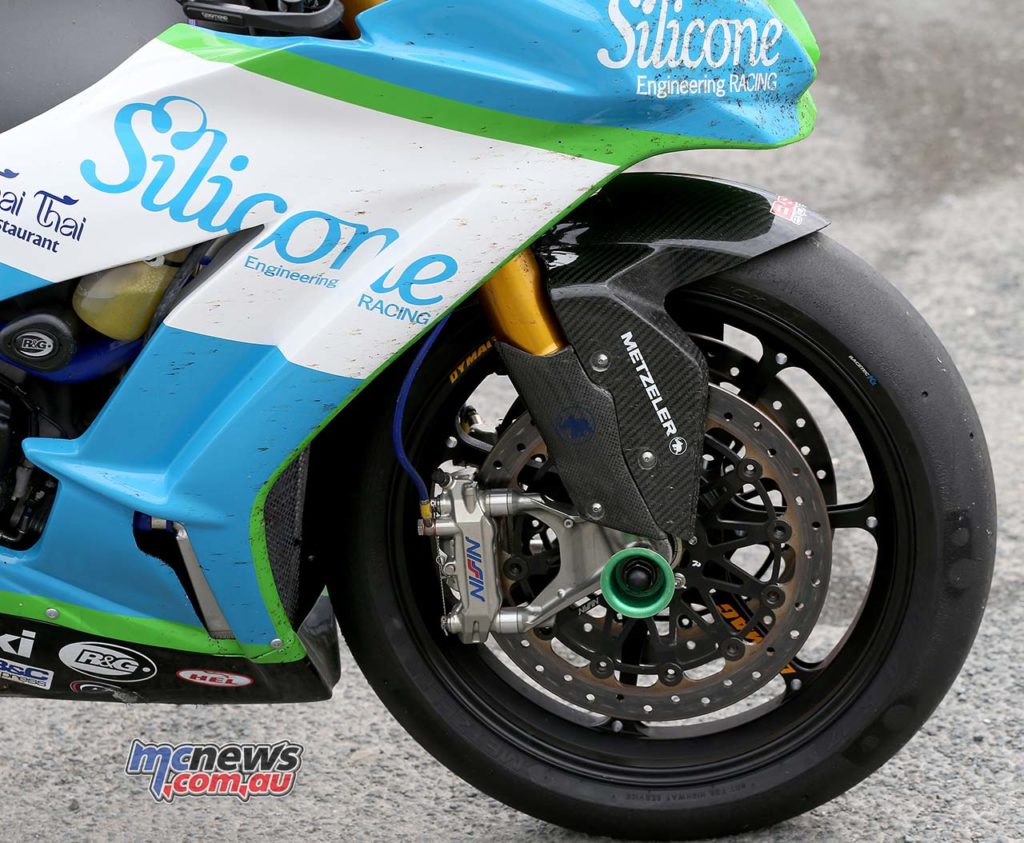
Chain lube is splattered over the factory swing-arm – even the Akrapovic logo, lost somewhere out there on the TT course, is still missing from the exhaust.
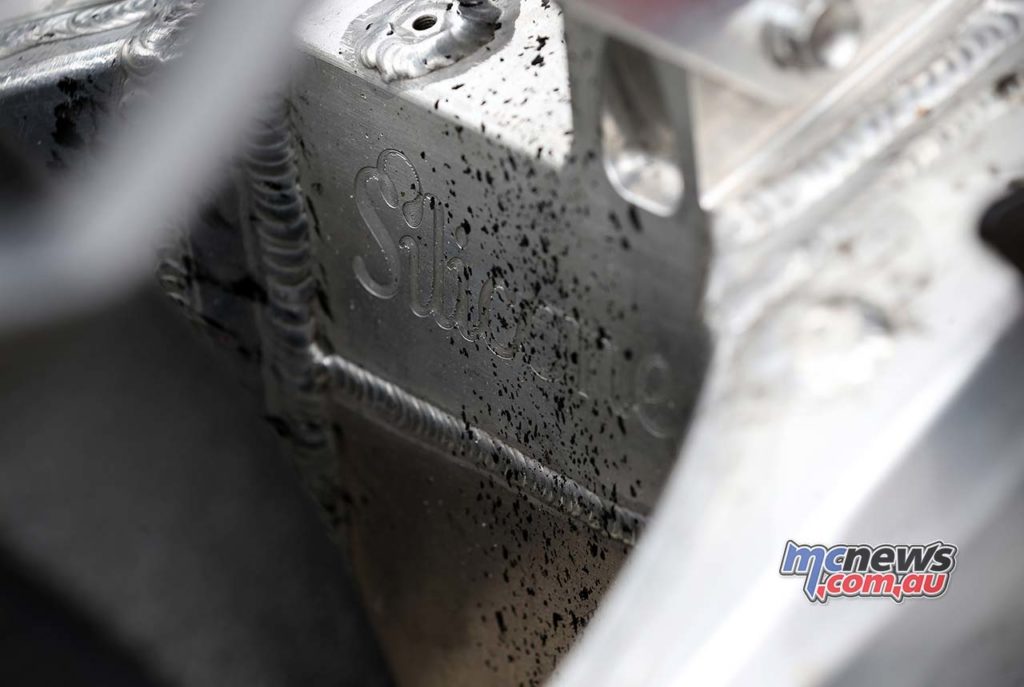
This very special Silicone Engineering ZX-10RR gave Kawasaki their first Senior TT win since Mick Grant in 1975, and crossed the finish line on Glencrutchery Road less than 24 hours before I got to throw a leg over the machine.
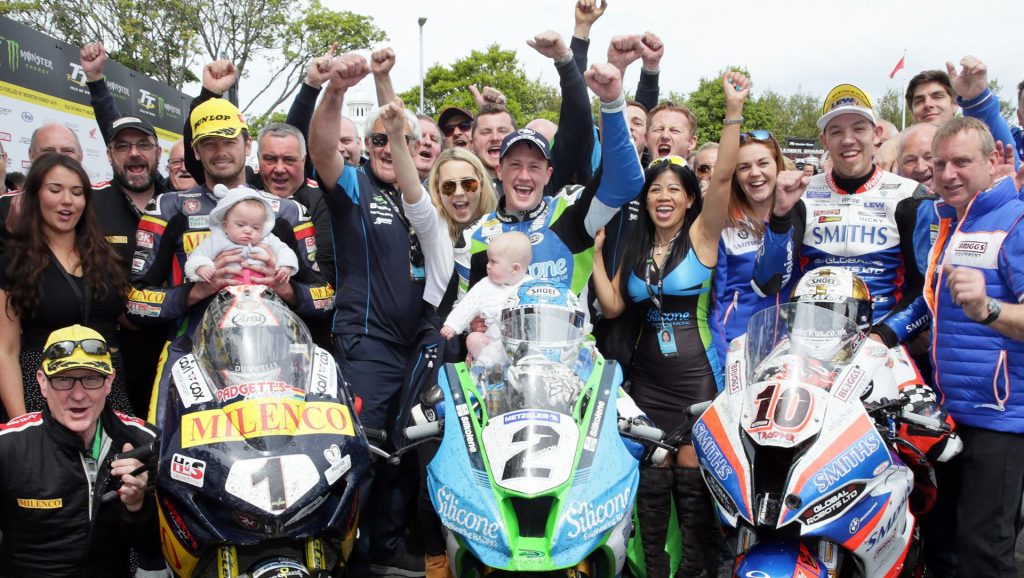
1. Dean Harrison / Kawasaki
2. Peter Hickman / BMW +53.062
3.. Conor Cummins / Honda +58.879
The grips, the levers – everything – are as Dean left them. After my ride the bike headed into private storage to never be ridden again; its factory engine silenced forever as its proud owner puts it on display at home.
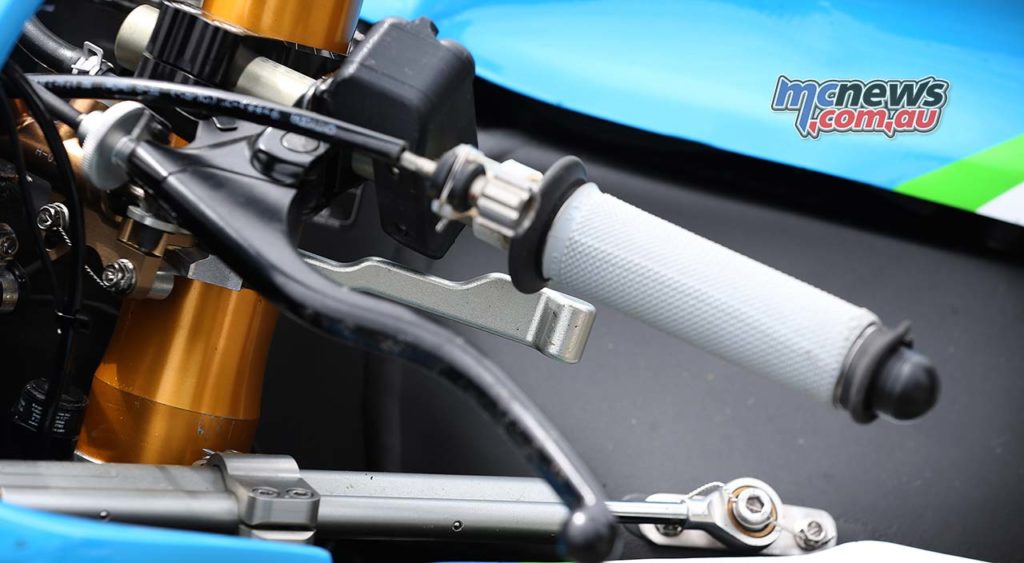
This is one special bike
For those of you who thought Harrison’s TT winning bike was back racing in the British Superbike Championship at the next round, let me assure you it wasn’t. It’s true, many TT teams now run modified BSB bikes on the roads, but Dean’s ‘official’ Kawasaki is very different. This is a very special one-off.
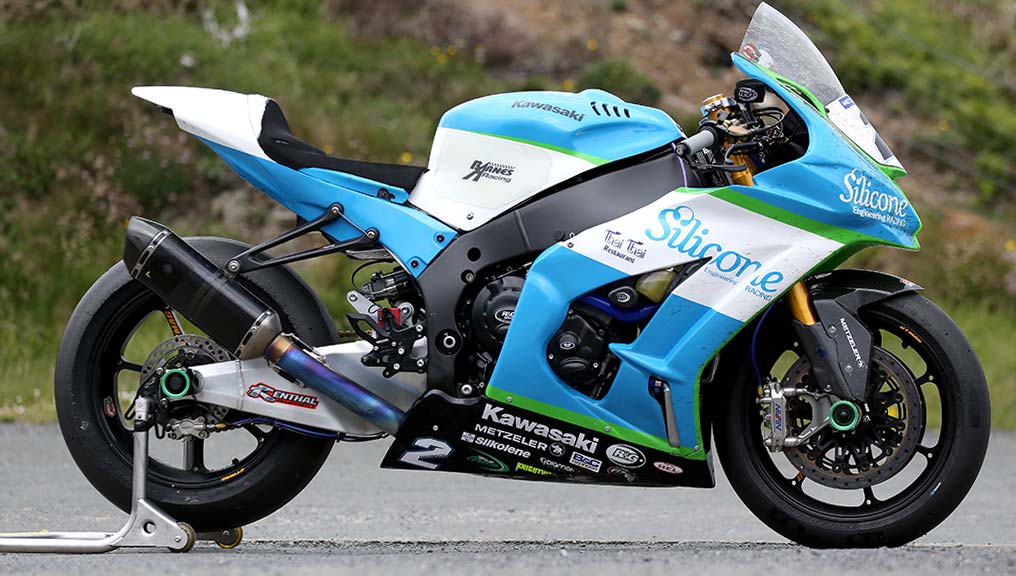
The wheels are the same as those used in BSB, but that is really where any similarity ends. The discs are a different spec’ and the brake calipers are changed too. Dean’s BSB bikes use a four-pot Brembo set up while the TT bike uses Nissin six-piston calipers. The Brembo brakes have more instant bite while the TT brakes are more consistent.
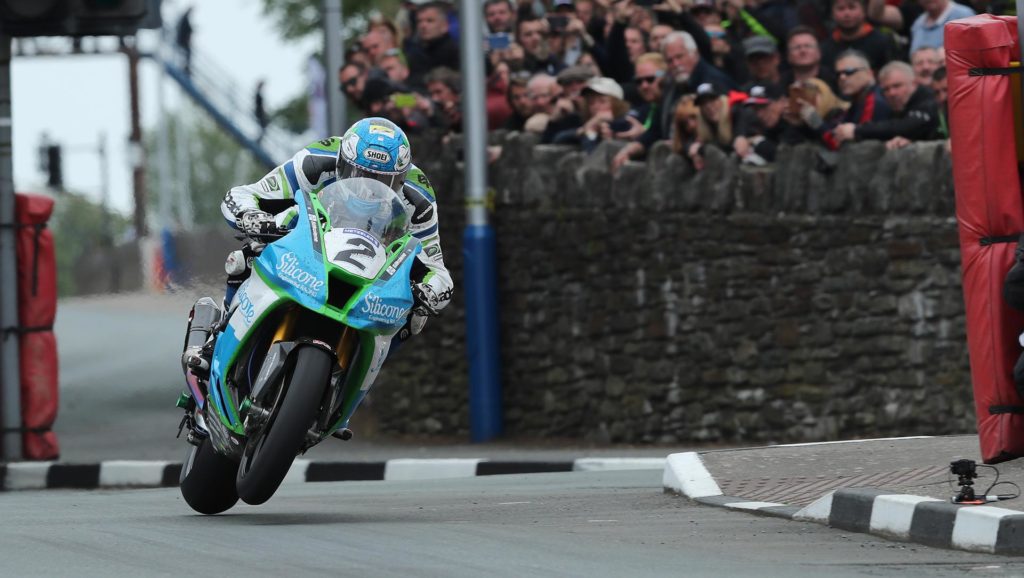
You’re never really punishing the brakes around the TT – you don’t need massive initial short-circuit bite – and Dean prefers the Nissin six-piston set up at the TT (although the rear thumb Nissin brake is similar to his BSB bike’s set-up).
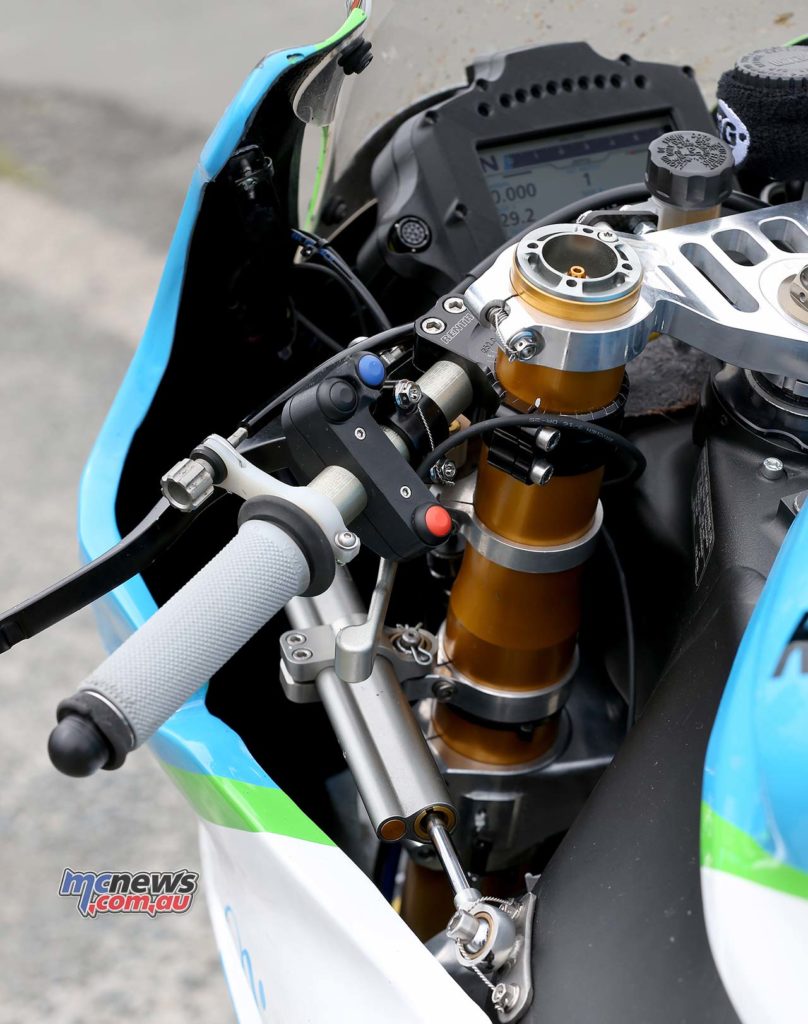
Let’s talk suspension
The Öhlins forks are similar, but the BSB ZX-10RR makes full use of the latest Öhlins 2530 while the TT bike runs the older 2525 spec’ from 2018. With so little set-up time due to the bad weather in practice week at the 2019 TT the team didn’t get the opportunity to test new fork options, so ran the same forks as 2018.
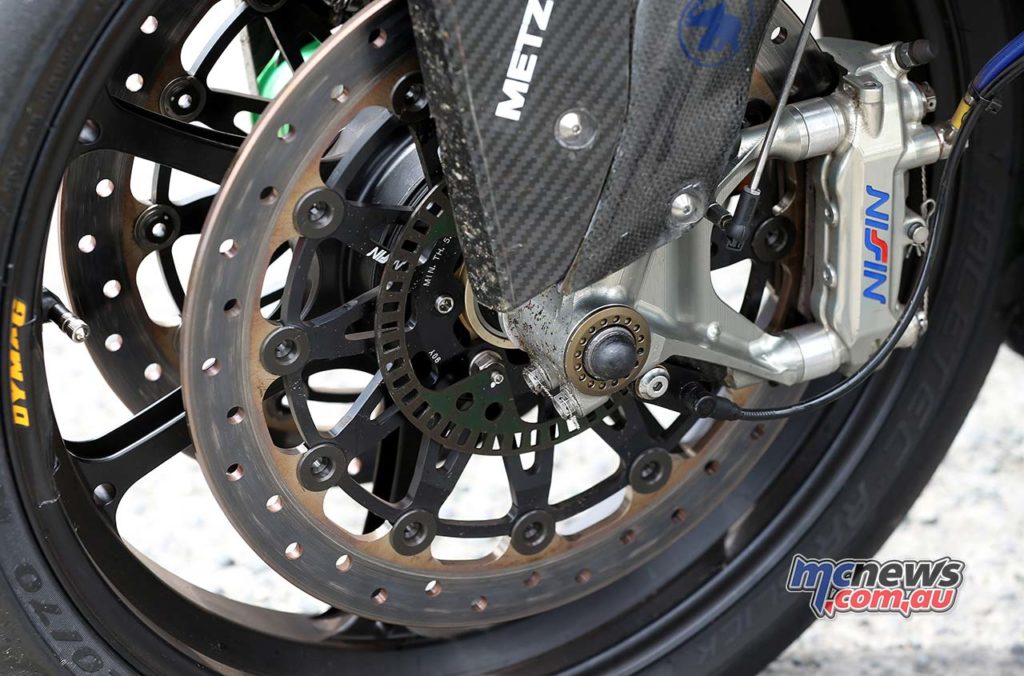
The main difference is the flex between the new and old forks, and Dean preferred the older set-up. The top yoke is changed to accommodate the smaller-diameter forks. The top yoke is also stiffer on the TT bike, with fewer cutaway sections.
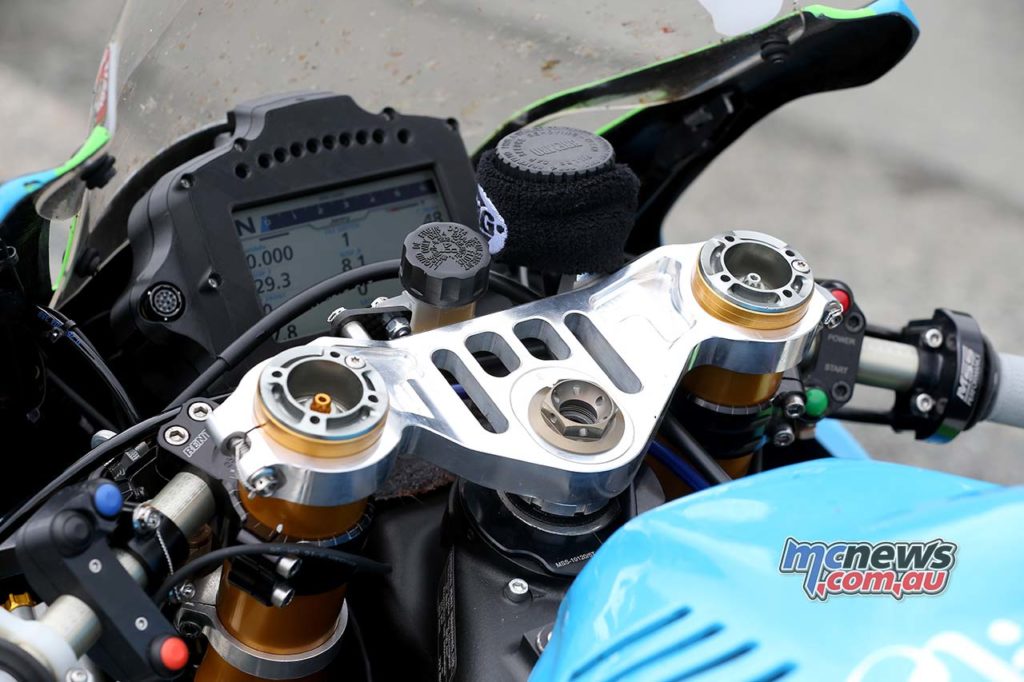
The Silicone team isn’t commercially linked to any products: everything they use, they buy. If an item doesn’t work, they won’t use it. And while the team runs an Öhlins unit to complement the front whne racing in BSB, Dean prefers a Maxton rear shock on the roads.
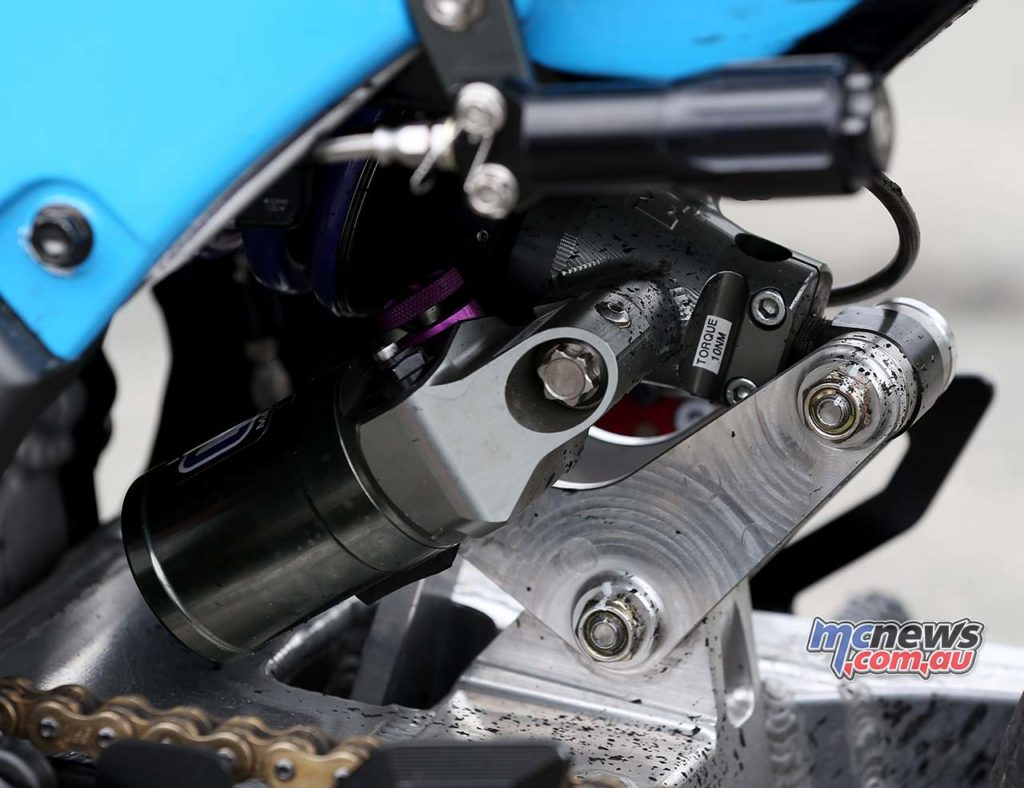
In fact, if Dean wanted pink grips to make him faster, Silicone Engineering would buy him pink grips. Hard-centred TT tyres are, of course, supplied by Metzeler (it’s Pirelli in BSB), which again Dean is happy with.
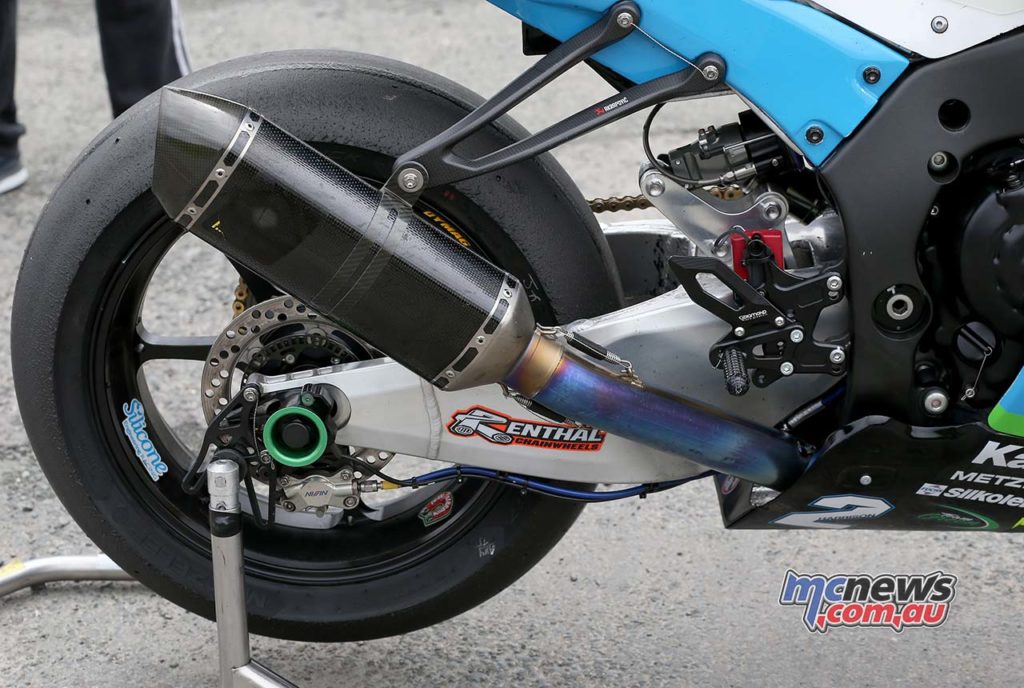
Bespoke items
Some components of the Senior TT-winning bike are completely bespoke. The swing-arm, for example, is the team’s own and the final version of six designs, which the team admit was excessively expensive to produce. Dean arrived at the TT with three different iterations, each one tweakable to increase or reduce flex and stiffness.
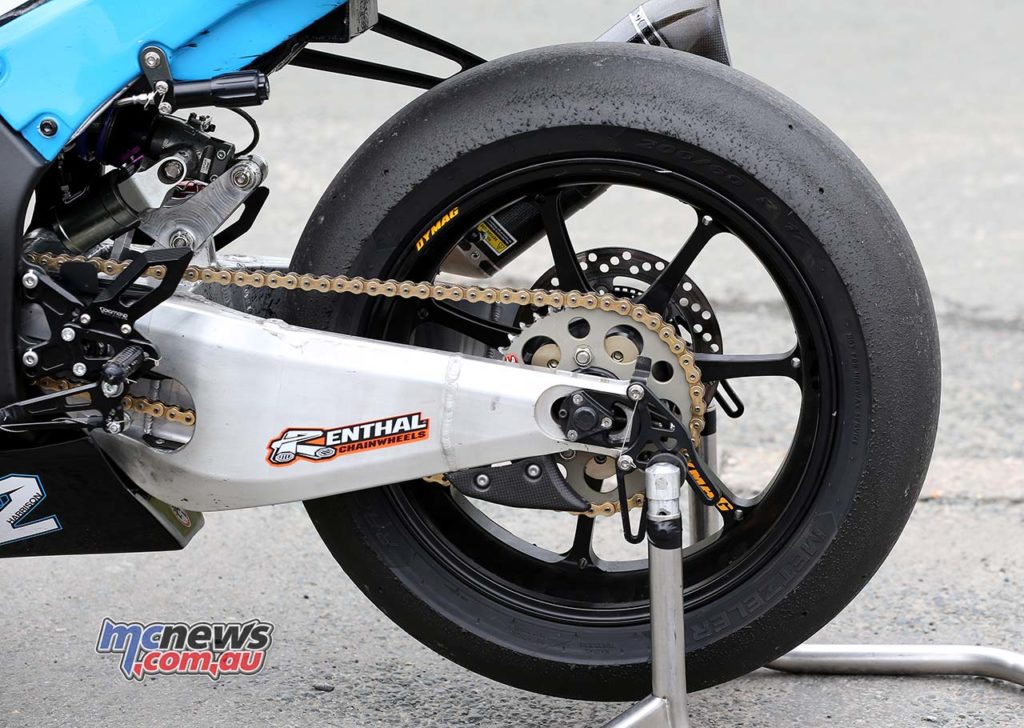
This is done by adding or removing bolts within the structure of the arm. Version one, with no bolts, has lots of flex – then it’s version one with bolts, then version two without bolts, then version two with bolts… and so on, with each swing-arm version (with and without bolts) increasing or decreasing stiffness by around 10 per cent.
Essentially Dean has three different arms to choose from with each one having two variants. During a BSB weekend, Dean will normally use swing-arm number two with bolts, but at the TT it’s swing-arm one, as he prefers more flex.
As someone who has raced the TT I find it hard to believe Dean can feel the difference in 10 per cent more flex when lapping the TT at a 134 mph average, but as crew chief Jonny Bagnall explains, “Yes, he’ll notice the difference straight away. He’ll notice how much the bike slides, which I know sounds ridiculous around the TT, but Dean slides the bike. He prefers the bike to slide progressively, and we can help with that by increasing or reducing the flex in the swingarm. What he doesn’t want is the bike to snap out of line; he wants it to slide gracefully.”
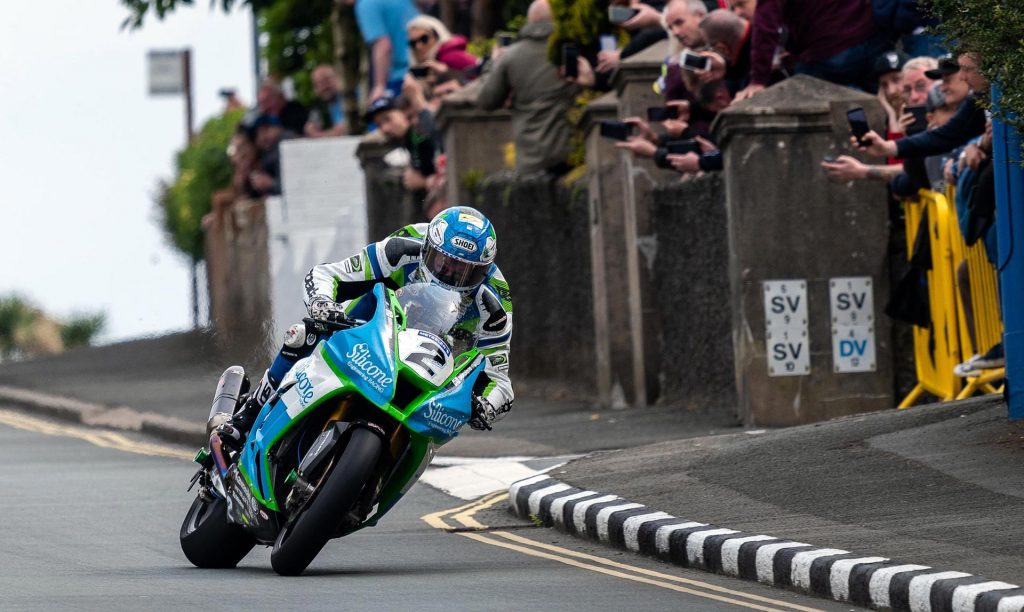
Again, the frame is different from that of a BSB ZX-10RR. The road frame has more flex and isn’t braced heavily like the short circuit bike. In fact, the frame is showroom spec, the same as an everyday road bike.
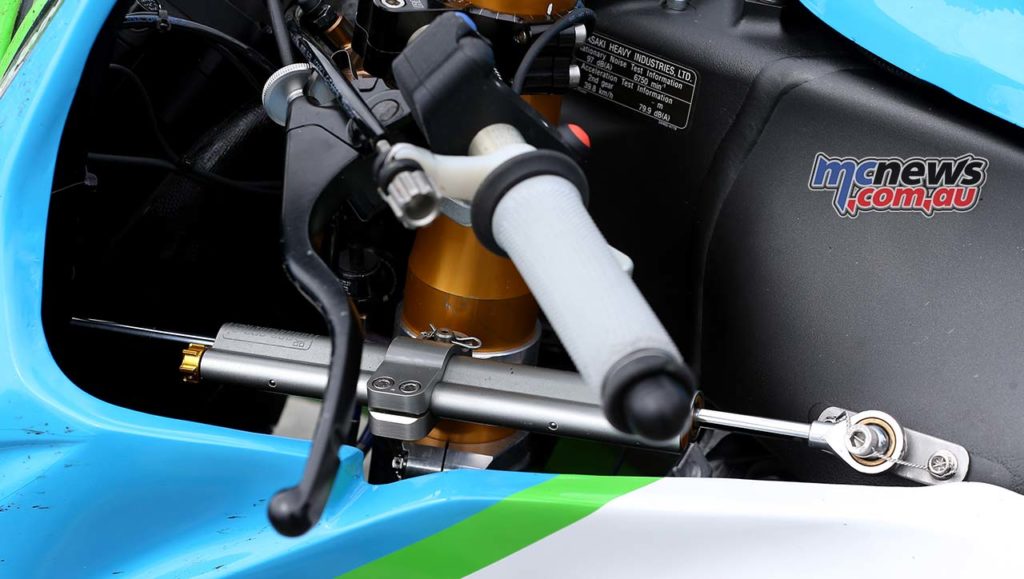
New engine, more power
Kawasaki introduced a new engine last year with finger-followers on the valves, and lighter titanium rods, which not only reduced engine inertia but also allowed the stock engine to rev 500 rpm higher. The new engine developments allowed the team to find even more bhp, with a significant 10 hp gain in the mid-range.
Dean liked the old engine and compared it to a two-stroke – ‘You’ve got to keep it revving’, he said – but now loves the huge increase in mid-range torque.
The team is reluctant to quote an actual power figure, but you’re looking at a true 225 hp at the back wheel. And that significant increase in torque and power created handling issues the team had to work around.
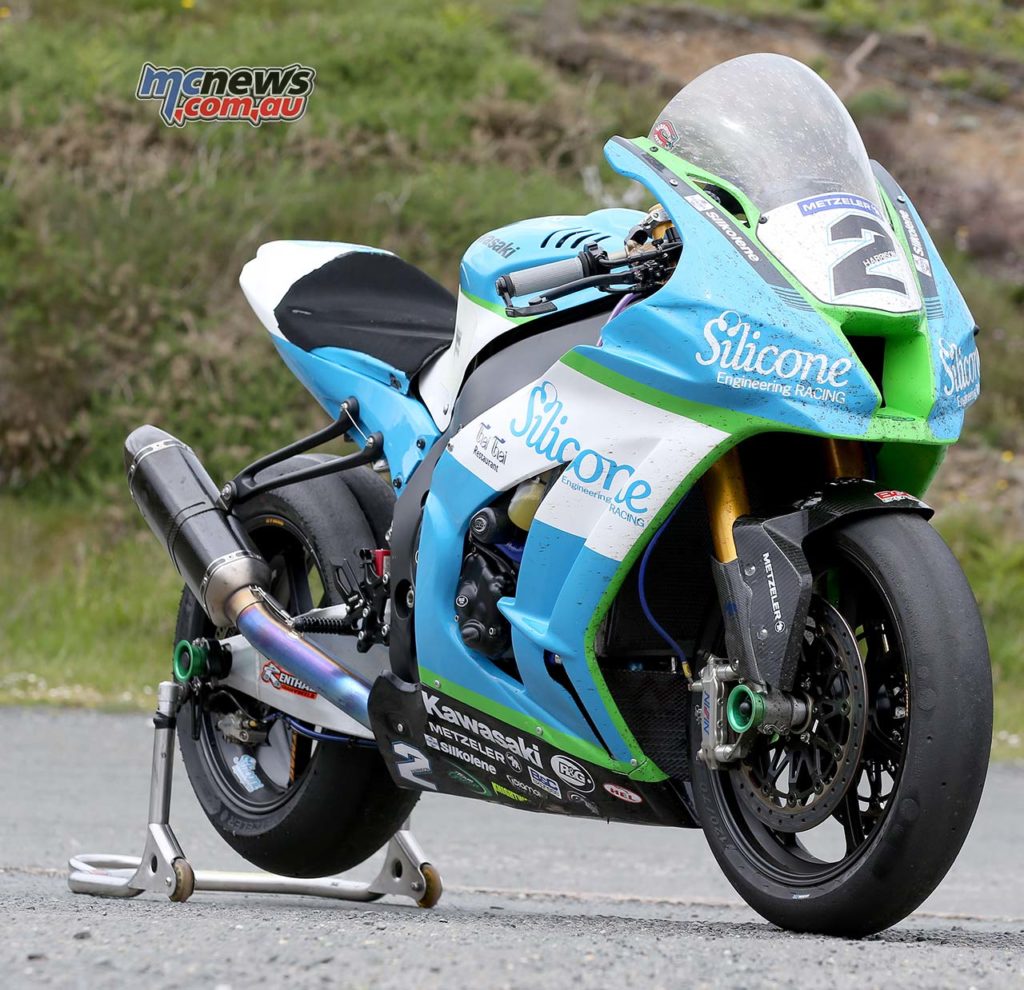
The TT engines are Kawasaki factory and supplied by Kawasaki’s World Superbike engine builder, Akira, whereas the BSB engine is developed by the team using factory kit parts. The engines go from Kawasaki to Akira and then are delivered to the team run in and ready to go – it’s just a case of bolting the special engine in.
The oil has to be changed every 250 km and the filter every 500 km. And yes, those of you who are good at maths will have worked out that the six-lap Senior TT was more than 250 km.
Despite the lack of label, the exhaust is made by Akrapovic and Motec controls the electronics and fuelling, the same as BSB. Teams at the TT have the option to run a kit ECU, which would allow rider aids, but Dean and the team choose BSB spec’ electronics, which means Dean alone controls the 225 hp.
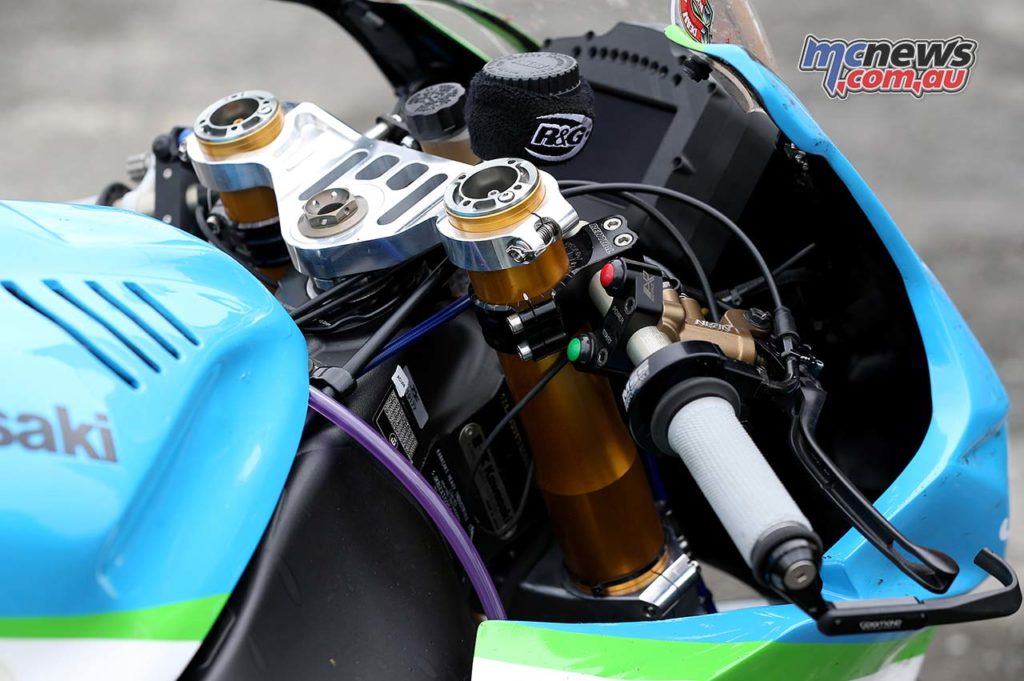
Again, the bodywork looks the same as any other race bike in BSB, but the top section is reinforced to make it stronger as you’re going that much fast for so much longer – and it stops flex. Surprisingly the screen is the same as BSB because Dean doesn’t use a large screen with add-ons like the majority of TT riders.
The fuel tanks, however, are completely different to both the BSB bike’s 22-litre tank and the standard road bike’s 17-litre tank. The TT bikes have a hand-made 24-litre tank that extends under the seat to keep the weight low and differs from those run by the other Kawasaki teams.
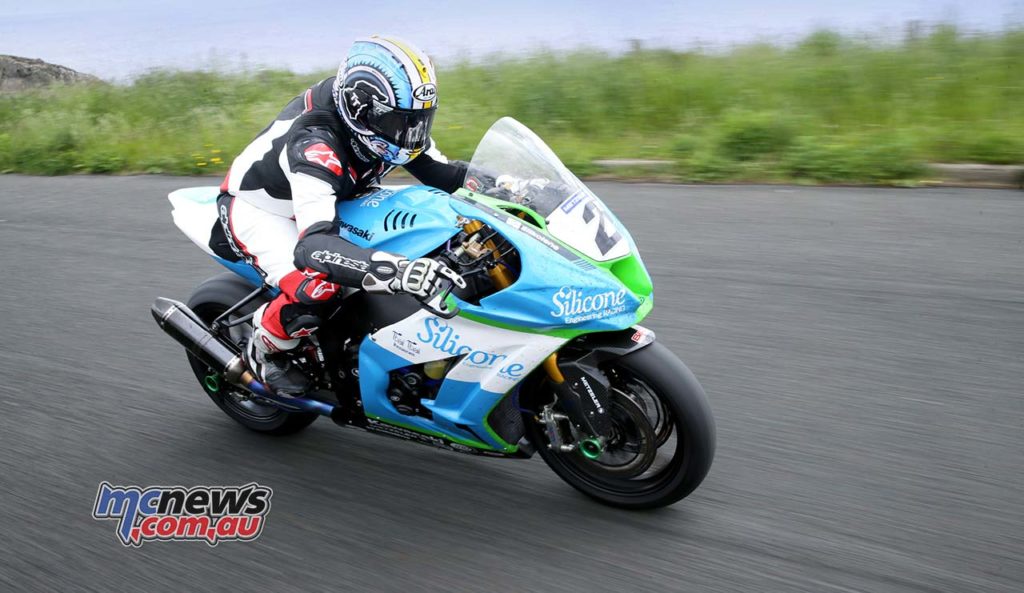
The bars and levers are the same as Dean’s BSB bike. Dean had been racing BSB in the summer to get ‘up-to-speed’ and didn’t want to get used to two bikes; therefore the bar position is similar on both bikes. The team worked countless hours on seat-position.
Their rider has been with the team for a few years and in 2018 they spent a huge amount of time getting Dean comfortable with the bike. The seat height is the same as the standard road-going ZX-10RR, even with the fuel tank running underneath the seat.
Little touches make the TT bike unique. The team has designed a captive spindle on the rear wheel so you can’t remove the entire spindle and place it on the ground; it doesn’t come fully out when you remove the rear wheel. Remember the Senior is over six-laps, which means two rear wheel changes in under 40-seconds per stop.
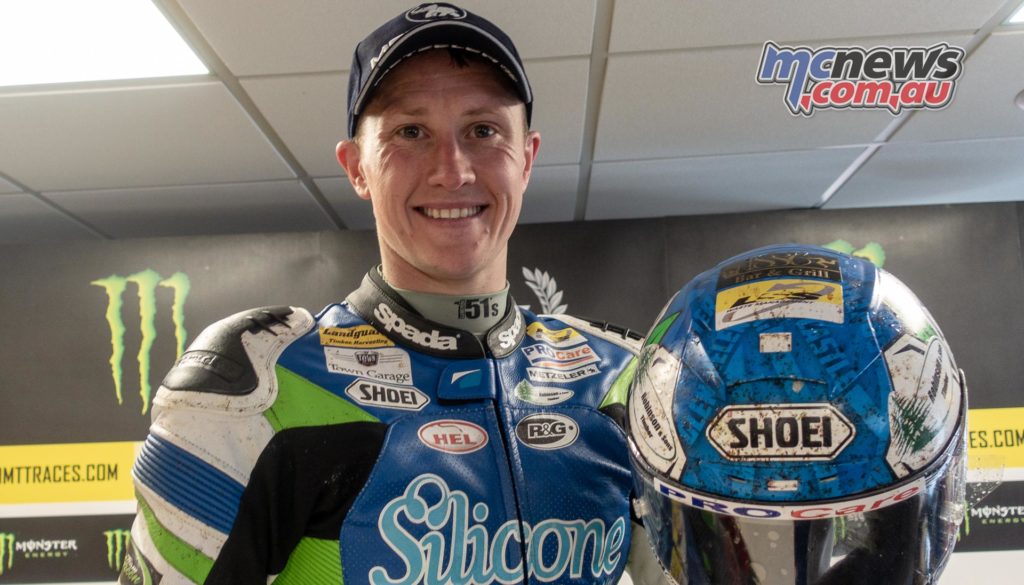
The sub-frame is easily removable, all the electronics are upfront with the only wire going to the rear being for the mandatory rain light. This allows quick easy access.
Everything is lock-wired, the team will use a few metres of lock-wire on each bike build. Check out some of the detail images if you need convincing. Steering damper, calipers, exhaust bracket are all secured with meticulous and painstaking lock-wiring.
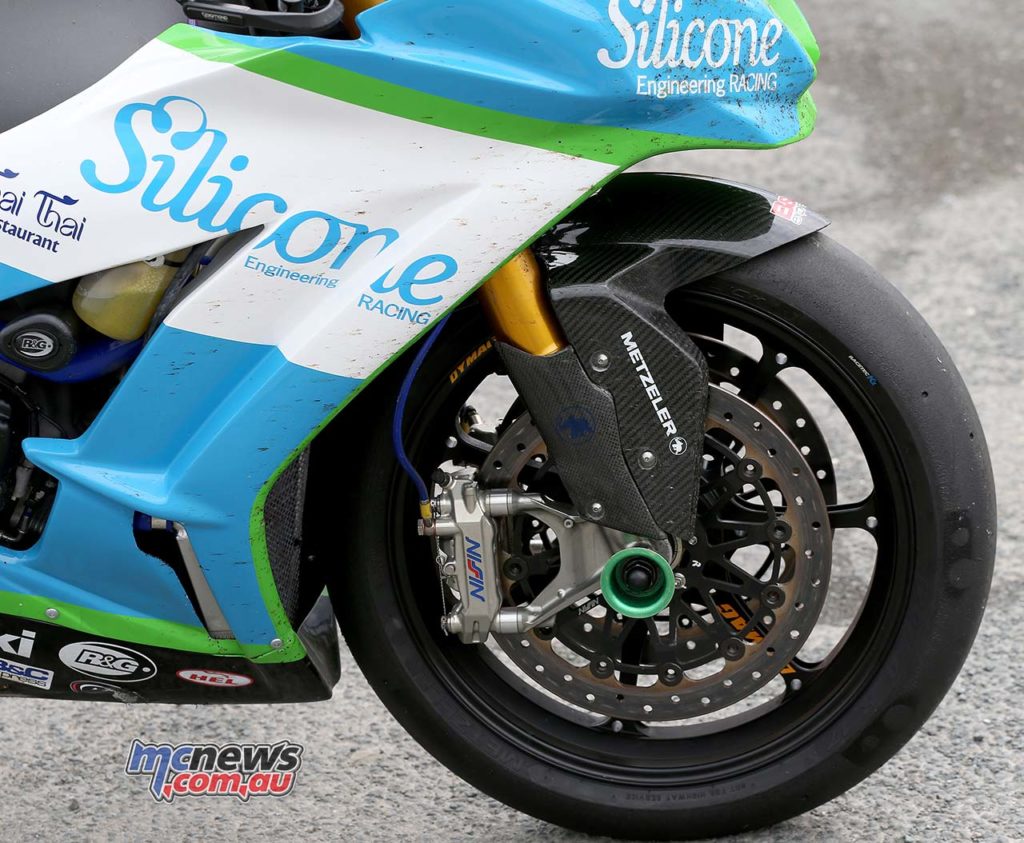
Close to running out of fuel!
Bob Grey, the team’s Data Technician, designed the switchgear, dash surround, rear rain light, and a few other items. Plastic printing was used and money was saved if needed, “The actual buttons are £3.75 plus VAT and on the TT bike we only need minimal buttons – a pit-lane limiter and a map switch – and on the right bar an on and off switch. We’ve also added a rain light button. The rain light is the blue button (water is blue), black is for the map switch, and orange is the pit lane limiter.
“We don’t show Dean a board and tell him to change the map. In practice we’ll change the mapping; if Dean thinks the mapping is shit, he can press the map button and it will go back to the previous map. The fuel map in the bike at the moment is the saving-fuel map.”

One of the problems the team encountered at the 2018 TT, especially in the first Superbike race on day one, was fuel starvation on the end of laps two and four – before the fuel stops. Dean was complaining the bike was surging. Bob and the team analysed the data and could see the fuel pressure dropping for a fraction of a second before the surging as the fuel tank levels depleted.
Bob explains the predicament the team was in the night before the senior, “We were up to the very early hours working out fuel consumption and looked at fuelling strategies. I could lean the motor, to save fuel, but then we could go too lean and the engine would over-heat and melt. But if I’d left the fuelling alone we would have most likely run out of fuel. So, I had to use some calculations and guesswork and went big.
“There was a little bit of surging at the end of lap two as Dean came into the pits, but we’d saved enough fuel to stop the surging in other places. Thankfully the bike ran fine. The link pipe turned purple, it must have been running hot, but we didn’t have any issues. When Dean noticed he had a big lead from his pit-board he maturely rolled off a little which also helped with fuel consumption.”
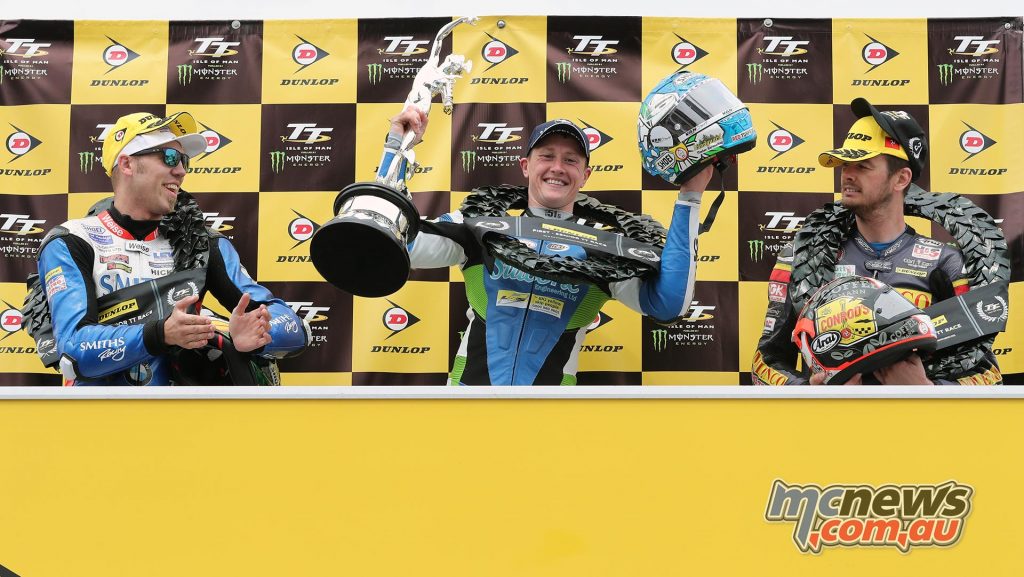
1. Dean Harrison
2. Peter Hickman +53.062
3. Conor Cummins +58.879
Riding Dean Harrison’s Senior Kawasaki ZX-10RR
Let’s be honest, I’m not going to pretend I can feel the flex in the chassis. Nor did I push the handling limits, and I didn’t feel the used Metzeler slide – despite racing the TT several times I don’t have that level of skill.
I just wanted to get a flavour of the historic TT winning bike, which thankfully the team agreed to the morning after the TT. With hangovers still pounding from the previous night’s celebrations, we headed to out – and forgot the tyre warmers.
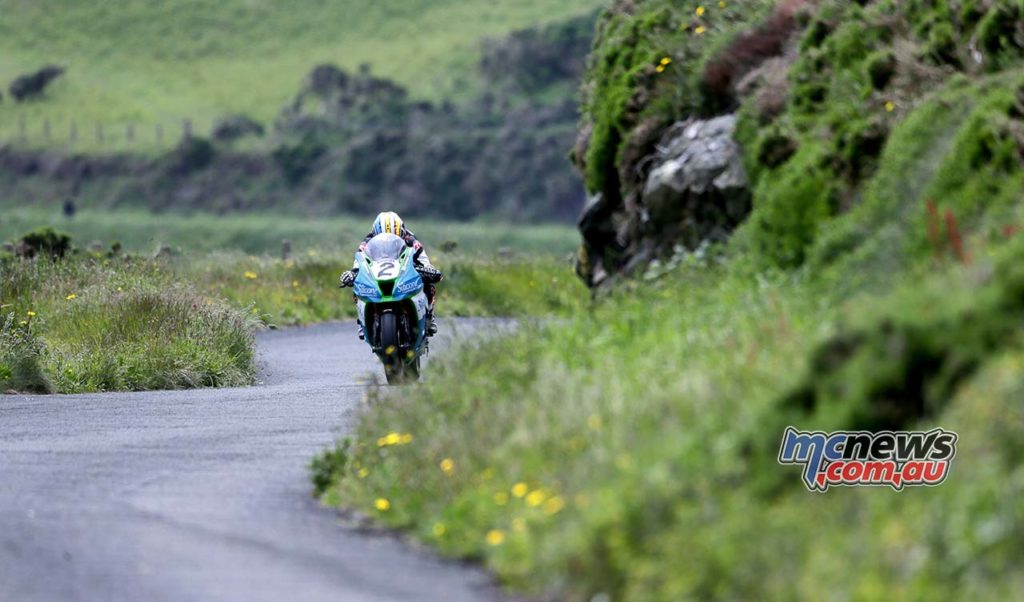
The TT winning bike starts on the button, but to ease the Nova gearbox, Jonny gives me a push to get everything moving before I slotted it into gear. Dean uses a conventional road shift, not a race shift, so it’s unusually down for first gear. The clutch feels heavy and the power is snatchy and aggressive low down. But I’m guessing Dean only lets the rev drop below 5000 rpm three times a lap, if that.
I’m obviously aware I’m on cold Metzeler slicks which have been abused around the TT and during a burn-out in the paddock. In the back of my mind, I know the bike is irreplaceable, and despite the fact that Dean is a good mate, he isn’t going to be too happy if I launch it.
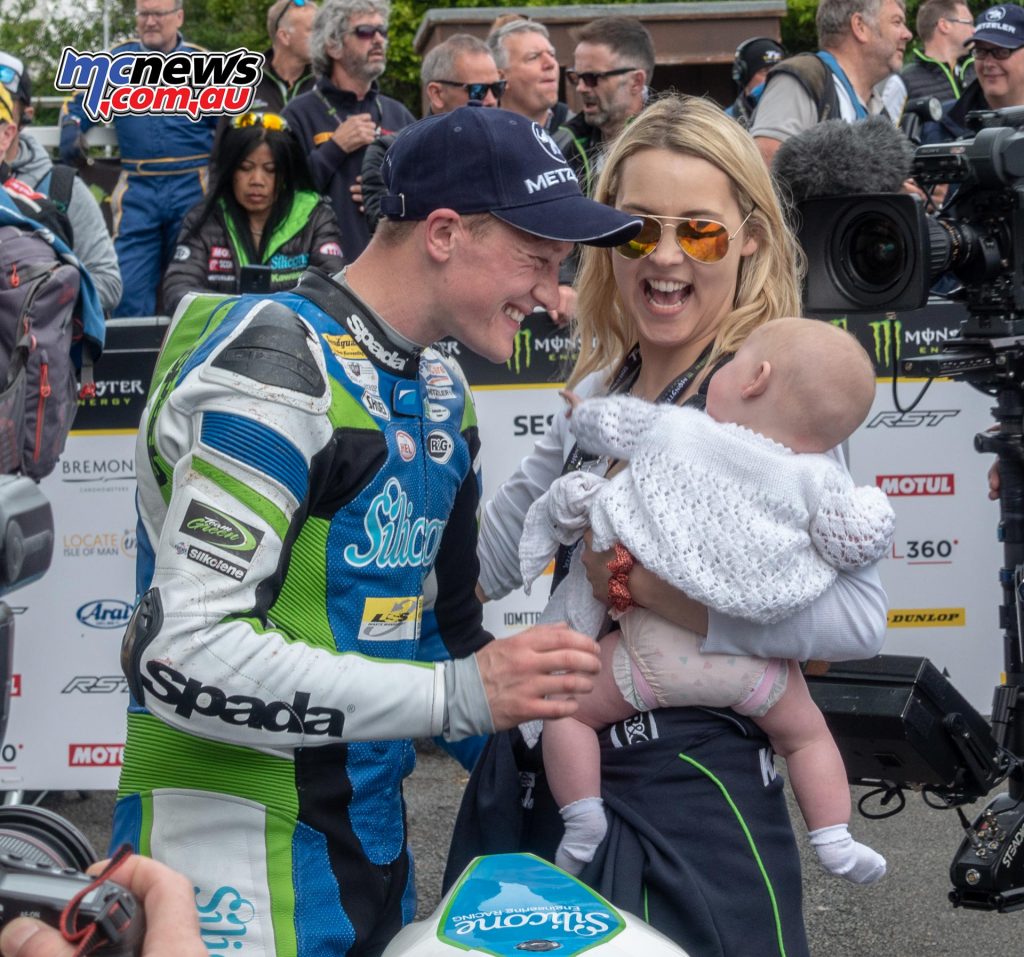
As you’d expect, it’s quick, but it feels raw. The whole bike feels alive, it’s a 225 hp animal without any rider aids. I’ve ridden many TT-winning bikes, and they feel a little timid, but the Kawasaki doesn’t. The thought of riding this flat out at the TT scares me to death. And Dean was power sliding the beast and wrestling it around in fifth and sixth gear – he’s got balls.
The ride isn’t harsh; it’s not a plank of wood with a fast engine, and as Dean explained the brakes are progressive, dare I say user-friendly. The thumb back brake has a nice, smooth, fluid action and doesn’t require a huge input, unlike other thumb brakes I’ve used in the past. Alarmingly my foot does keep reaching for the conventional back brake pedal, which isn’t there – don’t think I’ll be trying any wheelies.
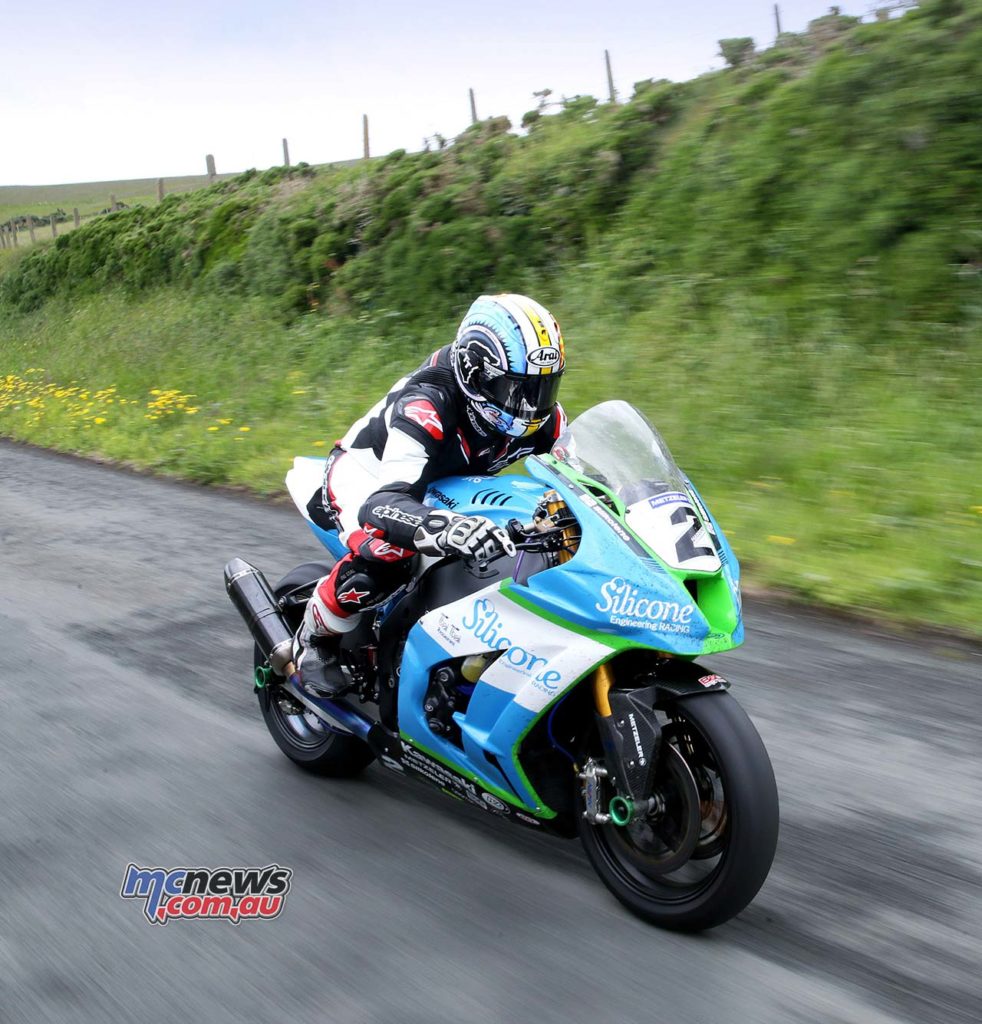
I love the simplicity of Dean’s bike and minimal buttons to minimise confusion. With its standard screen, simple dash with large digital rev counter there’s no glitz and glamour – it was built to do the job of winning the TT, and that’s it. Like a kit-car, it was designed for speed, not glamour or comfort, despite the face Dean has to ride flat out for close to two hours.
The bars are wide, and it feels like a big bike (with a full 24-litres of fuel she must have been a handful). The steering isn’t light, either, and make no mistake the big Kwaka took some riding. However, Dean is adamant it wasn’t that much of a handful, and it certainly looked like he was dancing with the ZX-10RR for most of the time. Simply having fun.
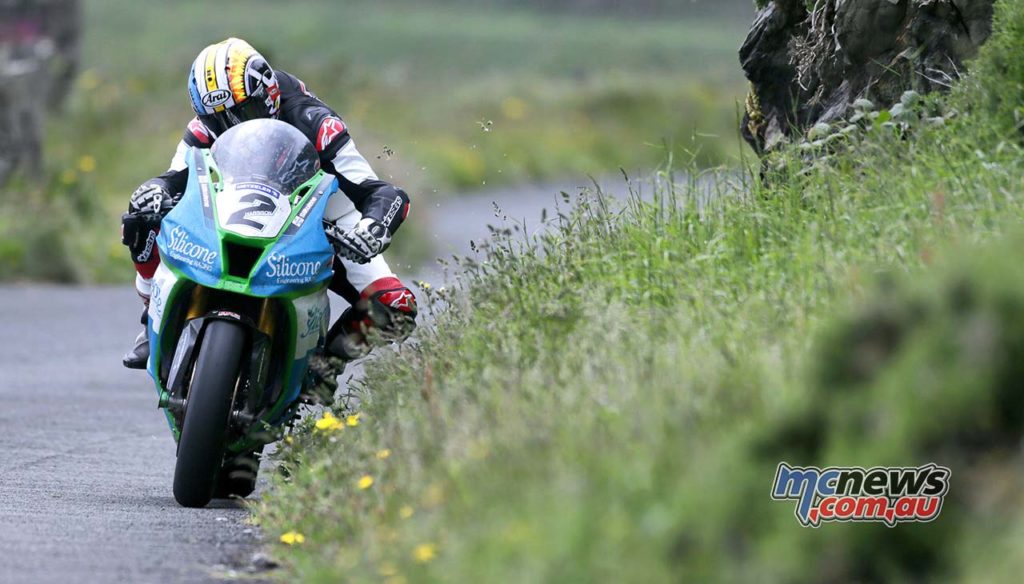
After a short ride, I was happy to give it back in one piece. It’s never nice riding a mate’s bike, especially one that happens to be priceless and has just won the TT. I’d like to say I’d love to ride it in anger, but I don’t think I would, especially not on the road. This is one scary and raw bike I’ll happily give back.
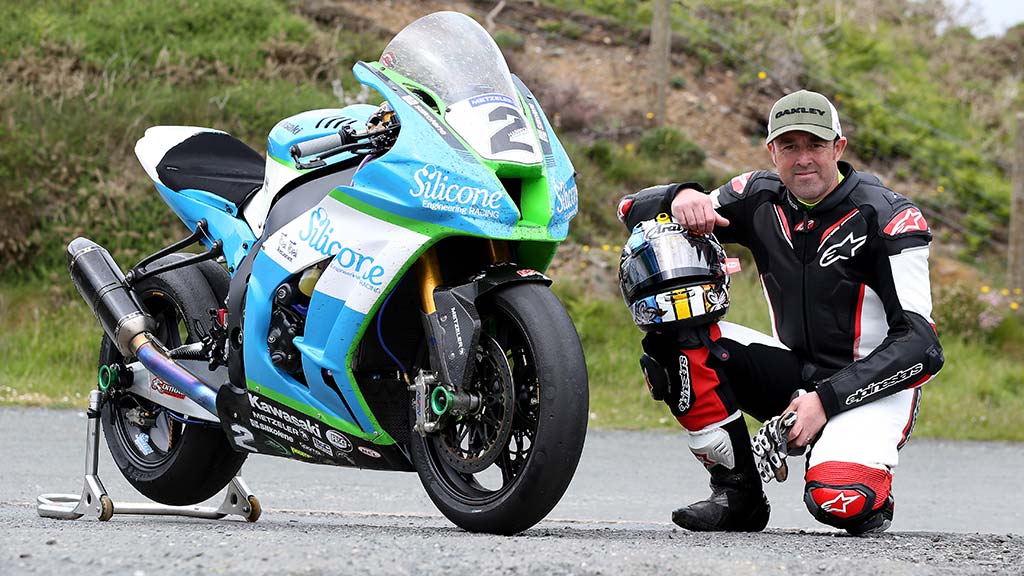
How the 2019 Senior race was won
Dean Harrison claimed his first senior win after Peter Hickman’s Smiths BMW began to overheat on lap five. Peter had a lead of nearly 20 seconds, but it was clear Peter had a problem as he left the second pit-stop. Down Sulby Straight Peter was down to 159 mph, compared to Dean at 191 mph.
By Ramsey Dean had an eight-second lead, with Conor 36-seconds back in third. On the last lap, it was clear Hickman had an ongoing issue again only posting 165 mph through the speed trap, and Dean continued to pull out a lead to more than 40-seconds.
On the run over the mountain, as Hickman’s problems continued, it looked like Conor on the Padgetts Honda may snatch the second spot, but Hickman just held on to second position, eventually finishing, 53-seconds behind Dean and just five seconds ahead of Conor. Michael Dunlop rounded off the top four.
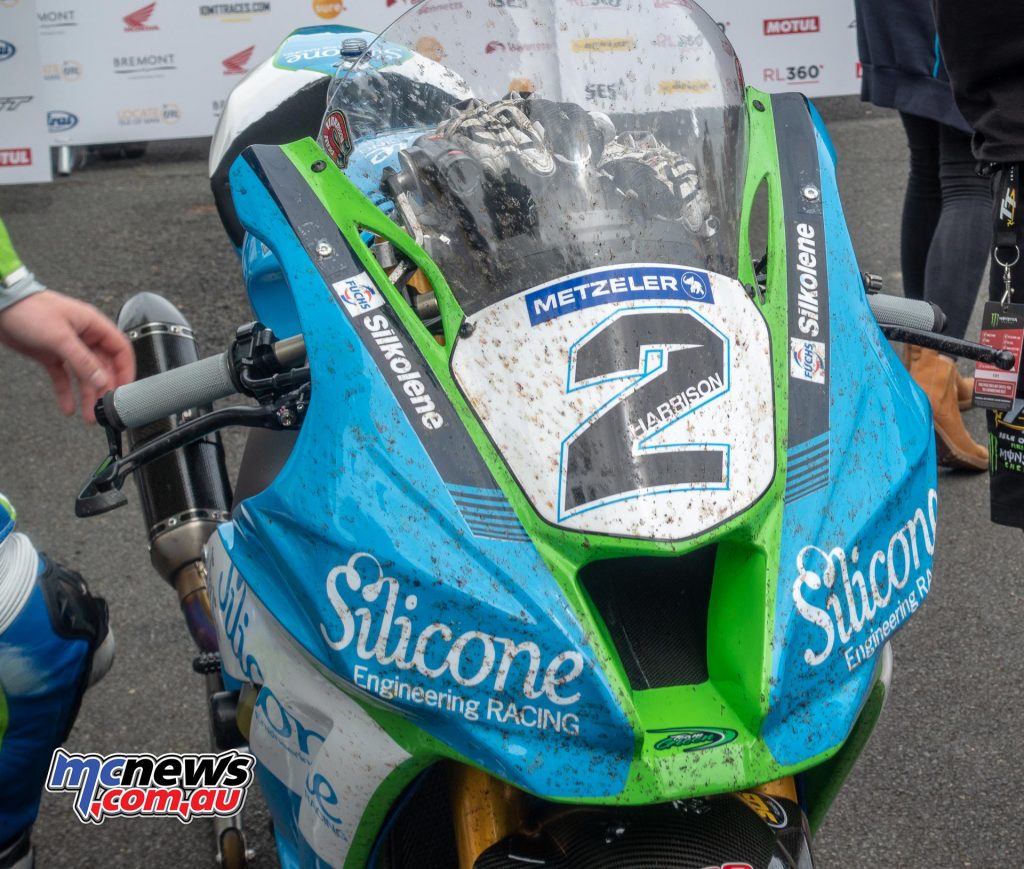
Dean was clearly overjoyed to take his first big bike win, “To finish first, you first must finish and the bike never missed a beat. I can’t believe it. I’m happy it’s a proper six-lap Senior Superbike win, I’m so happy for the team. The fans and the marshals were all waving, it’s amazing. I got a board which said P1 plus 30 so I knew Peter had a problem. I’m so going to celebrate tonight, you don’t want to know how I’m going to celebrate, it’s going to be big.”
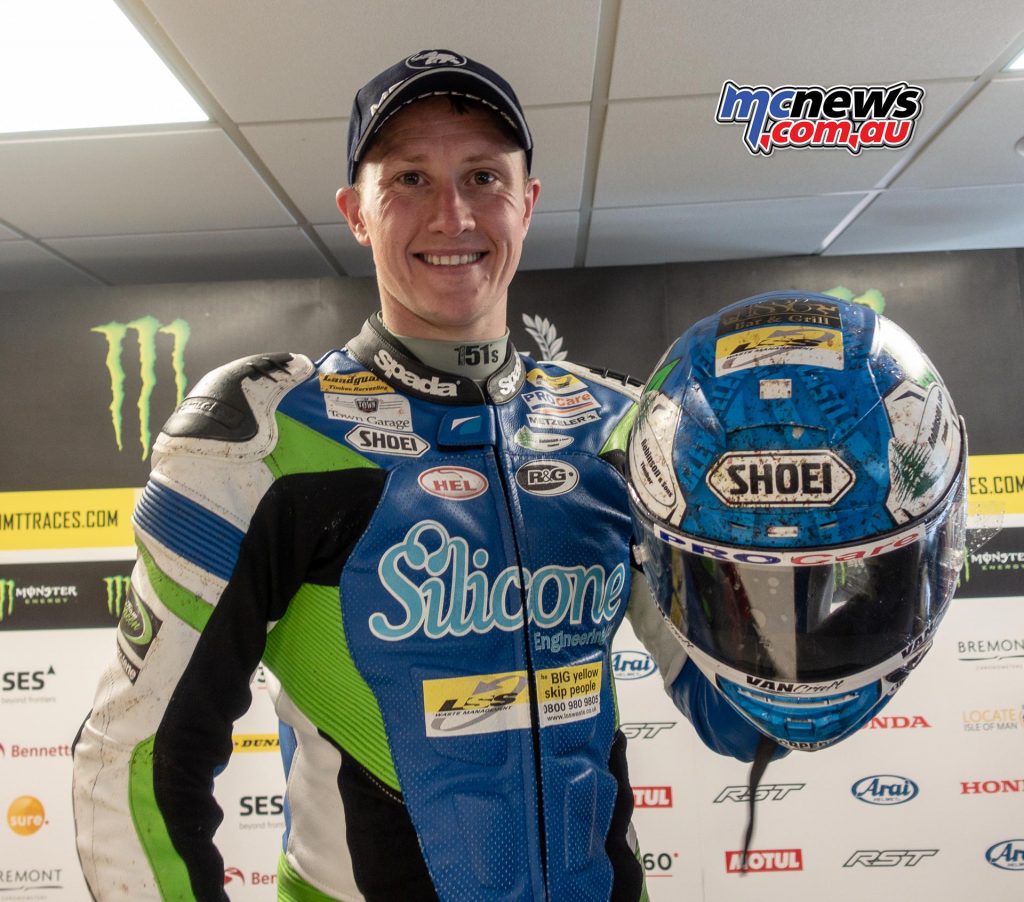
Peter Hickman sharing of his issues, “I got off to good start and I knew the first lap was 16-min as I came up on the dash. But as I came away from the pitstop the bike was overheating and when the bike went over 11,000rpm it was pissing water out. I couldn’t go past 11,000, so I just short-shifted everywhere, the last few laps seemed to take forever. It’s a problem we’ve had on the Superbike, but not on the Superstock, and we have some amazing people in the Smiths racing but we don’t know why.”
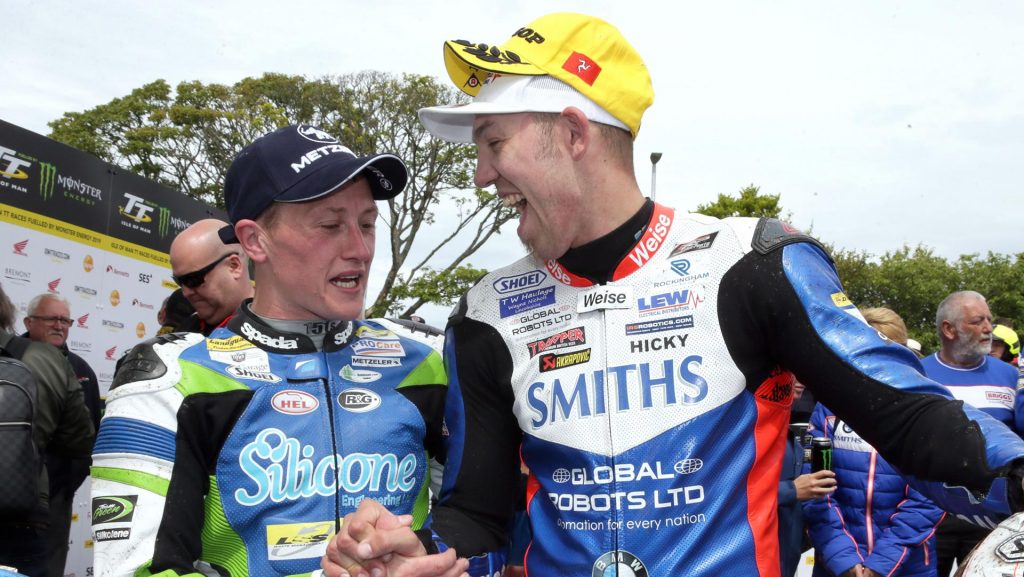
2019 Senior Results
- Dean Harrison 1:43:49.521 130.824mph
- Peter Hickman 1:44:42.583 129.719mph
- Conor Cummins 1:44:48.400 129.599mph
- Michael Dunlop 1:45:16.230 129.028mph
- James Hiller 1:46:19.873 127.740mph
Images Stephen Davison & TH























